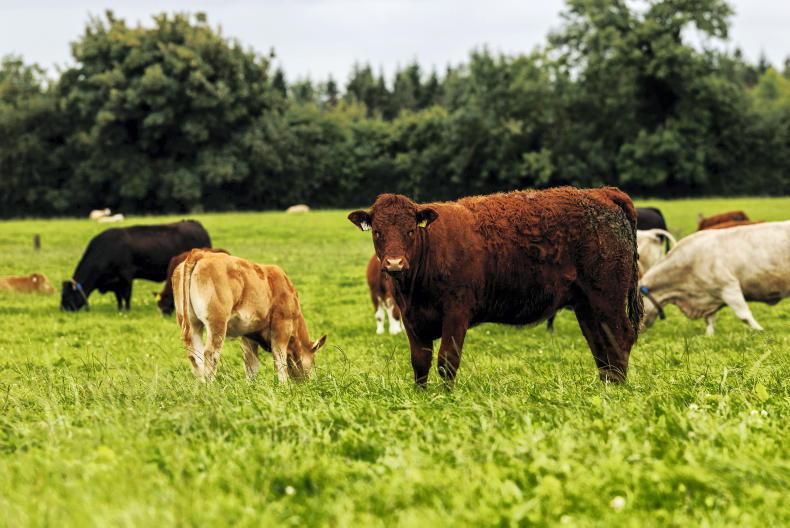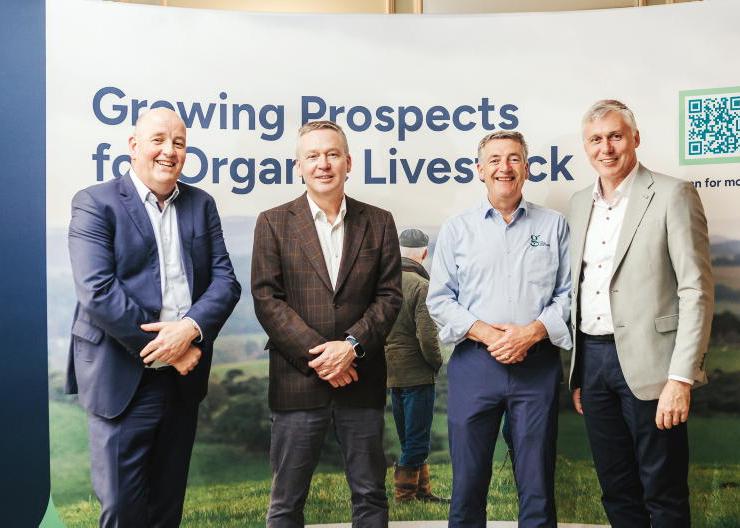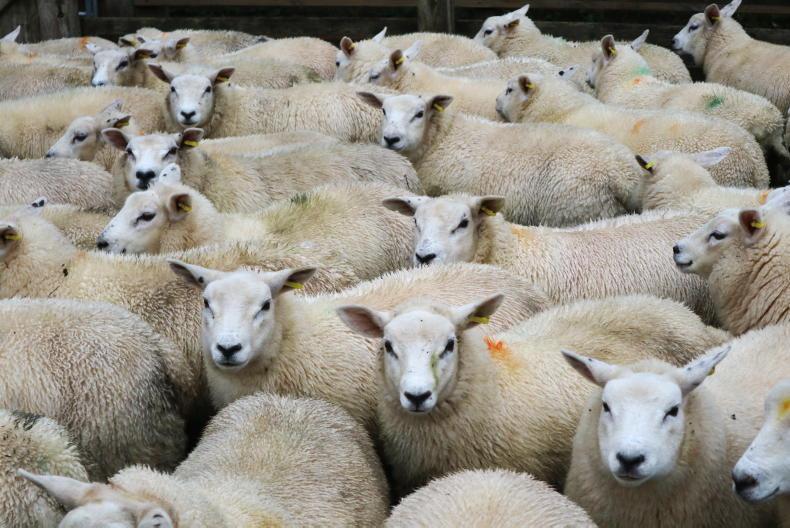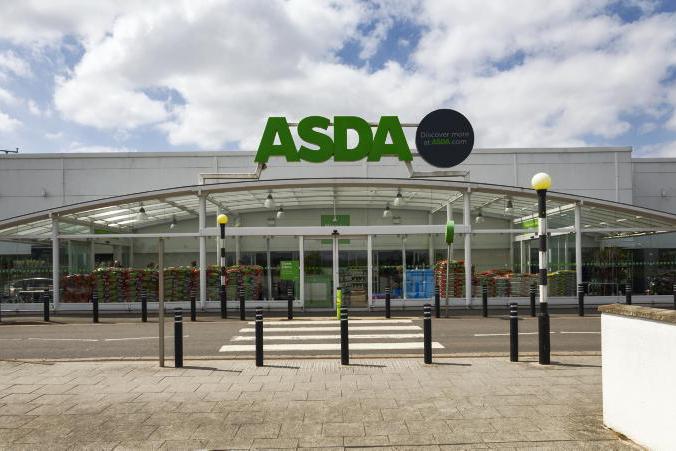This year, 2023, is forecast to be another challenging period for the UK sheep sector. According to the latest Agriculture and Horticulture Development Board (AHDB) sheep sector outlook, UK sheep production is predicted to increase by 8% to 9% compared to 2022 levels and, worryingly, lamb consumption is forecast to decline by 8%.
This follows significant decreases in consumption in recent years and when compared to 2019 levels UK sheepmeat consumption is expected to fall by a sharp figure of 21%.
The knock-on consequences of reduced demand on the UK domestic market and higher volumes in the pipeline are reduced import demand and a substantial jump of 15% in export volumes.
The worrying market forecast will have direct consequence for UK sheep producers and it is likely that there will be associated negative consequences for Irish sheep producers from the context of competing with higher volumes of UK sheepmeat in the European market and lower demand for Irish exports to the UK.
Production forecast
It should be pointed out at the outset that the AHDB states that it has queried figures published by the Department of Environment, Food and Rural Affairs (DEFRA) and that it continues to work with DEFRA and other industry bodies to “resolve the uncertainties arising from the data set”.
In its report, the AHDB has published a second outlook prediction or an alternative set of forecasts, which it says is based on “a wider outlook scenario” referred to in the following commentary and graphs, as AHDB estimates. It is not just the 2023 figures that are cited as inaccurate. AHDB is questioning figures published for the last two years.
Hogget carryover
While some figures vary significantly, there is not too much variation between the production estimates. For the first half of 2023, the forecast carryover of hoggets based on DEFRA figures is 4.6m head, an increase of 16% on 2022 levels.
Drought-related pressure on feed, poorer yield and utilisation of root crops and higher feed costs are highlighted as delaying normal drafting patterns.
The forecast number of new-season lambs available in the first half of 2023 is approximately 1.8m head.
For the second half of the year DEFRA predicts 7m lambs to be processed from June to December, up 500,000 head, or 7%.
AHDB estimates forecast a slightly lower carryover of 4.4m hoggets and 1.7m new-season lambs in the first half of 2023. Its forecast for the second half of 2023 is 7.3m lambs to be processed, up 8% or 400,000 head on its estimates for 2022.
Figure 1 shows the variation between DEFRA and AHDB estimates.
The AHDB outlook says DEFRA’s adult sheep slaughter was notably low in 2021 and 2022.
Taking into account a 0.5% increase in the UK breeding flock, it is forecasting the adult sheep kill to hit almost 1.5m head with AHDB estimates forecasting a higher kill figure of 1.6m head.
Production forecasts
Figure 3 details production forecasts. The production increases in 2019 due to higher volumes of sheepmeat being processed in advance of Brexit are evident.
DEFRA estimates production to increase 9% year on year in 2023 to 302,000t, while AHDB forecasts production to increase by 8% to 315,000t. Figure 4 gives a more in-depth view on production forecasts by quarter.
AHDB highlights that growth of the UK economy is expected to enter an extended period of sluggish growth, with continued inflationary pressure. This, it says, will have a continued strain on consumers’ budgets with this in turn having further negative connotations on consumption.
As already mentioned, it is predicted that lamb consumption will fall by in the region of 8% in 2023, bringing the total decline since 2019 to 21%.
It is envisaged that retail sales of sheepmeat may benefit from some consumers moving spending from outside the home (eating out, etc) to in-home, with sheepmeat capitalising on occasion/celebration spending.
However, AHDB predicts that an increasing number of shoppers will be lost to cheaper proteins. It adds that the carcase balance will need to be monitored with greater demand for cheaper cuts.
Promotional activity is seen as essential in trying to stem the very worrying declines in sales
The report highlights that 62% of consumers purchased lamb in the last year, down 7.2% on 2021 levels. Volumes traded were down 9.9%, while the value fell by 17.9% with cheaper cuts rising in popularity.
The average price of lamb increased by 9.8% in 2022, leaving prices on average £3.19/kg (€3.58/kg) more expensive than other meats, fish and poultry.
It predicts that takeaways and deliveries will remain bigger than pre-pandemic but that eating out will still not return to 2019 levels.
Volume declines are expected to be less steep around key dates such as Eid and Easter.
Promotional activity is seen as essential in trying to stem the very worrying declines in sales, with domestic consumption important in underpinning farmgate prices.
Export/import performance
The AHDB predicts that export volumes will grow by a very significant figure of 15%, while import volumes are thought to decrease by 5%. In addition to creating challenges for UK farmers, the export/import forecast will spell bad news for Irish producers with more competition in key EU markets and reduced UK demand. The forecast increase in exports comes on the back of exports increasing in 2022.
Exports increased by 5,400t or 8% to 75,300t compared with 2021. The value increased by £56m (€63m) to £494m (€555m). France is the main export destination for UK lamb, taking 33,863t in 2022, followed by Germany on 14,081t, with Ireland next accounting for in the region of 7,644t.
UK sheepmeat imports increased by a large figure of 22% up to November 2022, with import volumes recorded at approximately 54,000t, while the value of imports increased by £81m (€91m) to £342m (€385m).
New Zealand was the main supplier of UK lamb imports for the first 11 months of 2023, accounting for 32,548t in 2022, 27,930t of which was frozen. Australia was next, sending 9,575t, with Ireland the third largest supplier on 7,078t.
AHDB market intelligence points to lower imports of New Zealand sheepmeat in 2023. It highlights three key contributors – a smaller national ewe flock, a lower lamb crop and a recovery in demand in Asian markets and namely China.
If Chinese demand is weaker then there is a strong possibility of higher volumes of New Zealand sheepmeat entering both the UK and Europe on the back of a weakening value of the New Zealand dollar relative to sterling and euro.
The report also identifies the possible effect of higher volumes of Australian sheepmeat once the recently agreed trade deal comes into play.
This will provide Australia with a tariff-free quota which increases on an upward scale to 75,000t over the next decade.
The last three to four years have been unpredictable for the UK sheep sector. Brexit-fuelled uncertainty gave rise to a significant spike in throughput in 2019 and any fears of farmgate sheep prices falling were quashed by an upward surge in global sheepmeat prices.
British prices increased from an equivalent average of €5.34/kg in 2020 to €6.85/kg in 2021 and €6.81/kg in 2022.
Global demand was helped by the African swine fever outbreak in China, while domestic demand benefitted from COVID-19 with sales strong despite higher prices.
However, the most recent unforeseen challenges including Russia’s invasion of Ukraine and a major reduction in Chinese sheepmeat imports is having a marked negative effect.
Continued inflationary pressure – whether related to war, Brexit or COVID-19 – is affecting the spending power of consumers.
The reality is that sheepmeat is expensive relative to other meat proteins and is the first to be hit when consumer spending is curtailed. Irish farmers need a thriving UK economy to reduce export competition and provide another important market outlet.
This year, 2023, is forecast to be another challenging period for the UK sheep sector. According to the latest Agriculture and Horticulture Development Board (AHDB) sheep sector outlook, UK sheep production is predicted to increase by 8% to 9% compared to 2022 levels and, worryingly, lamb consumption is forecast to decline by 8%.
This follows significant decreases in consumption in recent years and when compared to 2019 levels UK sheepmeat consumption is expected to fall by a sharp figure of 21%.
The knock-on consequences of reduced demand on the UK domestic market and higher volumes in the pipeline are reduced import demand and a substantial jump of 15% in export volumes.
The worrying market forecast will have direct consequence for UK sheep producers and it is likely that there will be associated negative consequences for Irish sheep producers from the context of competing with higher volumes of UK sheepmeat in the European market and lower demand for Irish exports to the UK.
Production forecast
It should be pointed out at the outset that the AHDB states that it has queried figures published by the Department of Environment, Food and Rural Affairs (DEFRA) and that it continues to work with DEFRA and other industry bodies to “resolve the uncertainties arising from the data set”.
In its report, the AHDB has published a second outlook prediction or an alternative set of forecasts, which it says is based on “a wider outlook scenario” referred to in the following commentary and graphs, as AHDB estimates. It is not just the 2023 figures that are cited as inaccurate. AHDB is questioning figures published for the last two years.
Hogget carryover
While some figures vary significantly, there is not too much variation between the production estimates. For the first half of 2023, the forecast carryover of hoggets based on DEFRA figures is 4.6m head, an increase of 16% on 2022 levels.
Drought-related pressure on feed, poorer yield and utilisation of root crops and higher feed costs are highlighted as delaying normal drafting patterns.
The forecast number of new-season lambs available in the first half of 2023 is approximately 1.8m head.
For the second half of the year DEFRA predicts 7m lambs to be processed from June to December, up 500,000 head, or 7%.
AHDB estimates forecast a slightly lower carryover of 4.4m hoggets and 1.7m new-season lambs in the first half of 2023. Its forecast for the second half of 2023 is 7.3m lambs to be processed, up 8% or 400,000 head on its estimates for 2022.
Figure 1 shows the variation between DEFRA and AHDB estimates.
The AHDB outlook says DEFRA’s adult sheep slaughter was notably low in 2021 and 2022.
Taking into account a 0.5% increase in the UK breeding flock, it is forecasting the adult sheep kill to hit almost 1.5m head with AHDB estimates forecasting a higher kill figure of 1.6m head.
Production forecasts
Figure 3 details production forecasts. The production increases in 2019 due to higher volumes of sheepmeat being processed in advance of Brexit are evident.
DEFRA estimates production to increase 9% year on year in 2023 to 302,000t, while AHDB forecasts production to increase by 8% to 315,000t. Figure 4 gives a more in-depth view on production forecasts by quarter.
AHDB highlights that growth of the UK economy is expected to enter an extended period of sluggish growth, with continued inflationary pressure. This, it says, will have a continued strain on consumers’ budgets with this in turn having further negative connotations on consumption.
As already mentioned, it is predicted that lamb consumption will fall by in the region of 8% in 2023, bringing the total decline since 2019 to 21%.
It is envisaged that retail sales of sheepmeat may benefit from some consumers moving spending from outside the home (eating out, etc) to in-home, with sheepmeat capitalising on occasion/celebration spending.
However, AHDB predicts that an increasing number of shoppers will be lost to cheaper proteins. It adds that the carcase balance will need to be monitored with greater demand for cheaper cuts.
Promotional activity is seen as essential in trying to stem the very worrying declines in sales
The report highlights that 62% of consumers purchased lamb in the last year, down 7.2% on 2021 levels. Volumes traded were down 9.9%, while the value fell by 17.9% with cheaper cuts rising in popularity.
The average price of lamb increased by 9.8% in 2022, leaving prices on average £3.19/kg (€3.58/kg) more expensive than other meats, fish and poultry.
It predicts that takeaways and deliveries will remain bigger than pre-pandemic but that eating out will still not return to 2019 levels.
Volume declines are expected to be less steep around key dates such as Eid and Easter.
Promotional activity is seen as essential in trying to stem the very worrying declines in sales, with domestic consumption important in underpinning farmgate prices.
Export/import performance
The AHDB predicts that export volumes will grow by a very significant figure of 15%, while import volumes are thought to decrease by 5%. In addition to creating challenges for UK farmers, the export/import forecast will spell bad news for Irish producers with more competition in key EU markets and reduced UK demand. The forecast increase in exports comes on the back of exports increasing in 2022.
Exports increased by 5,400t or 8% to 75,300t compared with 2021. The value increased by £56m (€63m) to £494m (€555m). France is the main export destination for UK lamb, taking 33,863t in 2022, followed by Germany on 14,081t, with Ireland next accounting for in the region of 7,644t.
UK sheepmeat imports increased by a large figure of 22% up to November 2022, with import volumes recorded at approximately 54,000t, while the value of imports increased by £81m (€91m) to £342m (€385m).
New Zealand was the main supplier of UK lamb imports for the first 11 months of 2023, accounting for 32,548t in 2022, 27,930t of which was frozen. Australia was next, sending 9,575t, with Ireland the third largest supplier on 7,078t.
AHDB market intelligence points to lower imports of New Zealand sheepmeat in 2023. It highlights three key contributors – a smaller national ewe flock, a lower lamb crop and a recovery in demand in Asian markets and namely China.
If Chinese demand is weaker then there is a strong possibility of higher volumes of New Zealand sheepmeat entering both the UK and Europe on the back of a weakening value of the New Zealand dollar relative to sterling and euro.
The report also identifies the possible effect of higher volumes of Australian sheepmeat once the recently agreed trade deal comes into play.
This will provide Australia with a tariff-free quota which increases on an upward scale to 75,000t over the next decade.
The last three to four years have been unpredictable for the UK sheep sector. Brexit-fuelled uncertainty gave rise to a significant spike in throughput in 2019 and any fears of farmgate sheep prices falling were quashed by an upward surge in global sheepmeat prices.
British prices increased from an equivalent average of €5.34/kg in 2020 to €6.85/kg in 2021 and €6.81/kg in 2022.
Global demand was helped by the African swine fever outbreak in China, while domestic demand benefitted from COVID-19 with sales strong despite higher prices.
However, the most recent unforeseen challenges including Russia’s invasion of Ukraine and a major reduction in Chinese sheepmeat imports is having a marked negative effect.
Continued inflationary pressure – whether related to war, Brexit or COVID-19 – is affecting the spending power of consumers.
The reality is that sheepmeat is expensive relative to other meat proteins and is the first to be hit when consumer spending is curtailed. Irish farmers need a thriving UK economy to reduce export competition and provide another important market outlet.










SHARING OPTIONS